When I think of Selective Trout -smart trout that test your knowledge of entomology, your skills as a fly tyer and your fly casting skill – I think of Railroad Ranch. Its always been Railroad Ranch.
Railroad Ranch gets its name from the Oregon Short Line Railroad which purchased the Thurmond Ranch Homestead in 1997 for raising cattle. The Oregon Short Line Railroad was taken over by the Union Pacific Railway shortly after the ranch purchase and thus the name Railroad Ranch. The ranch was originally owned by the principle investors in The Union Pacific Railway, the Guggenheim Family. In 1908 E. H. Harriman bought a third of the ownership shares from the Guggenheims and eventually by 1955 owned all the ownership shares of the ranch. The Harrimans have always allowed public walk-in access to the Ranch for flyfishing and hunting since aquiring the ranch. Thanks to the generosity of the Harrimans for the access to this iconic section of river that has been the Ivy League University for so many famous and obsessed selective trout fly fishermen.
At 15 years of age, I thought I was pretty hot stuff catching big browns on flies at the family cabin on the Truckee. I was tying flies for Andy Puyans and heard and read about this famous section of river on the Henrys Fork of the Snake River that made Hat Creek, Fall River and the Williamson look easy. In 1971, Doug Swisher and Carl Richards published a book called Selective Trout which inspired me. My game got better on Hat Creek and the Fall River which was home to some of the smartest stillwater trout in Northern California. In 1972 I was the only west coast commercial fly tyer tying Swisher/Richard’s No Hackle dry flies and when Mike and Sherlee opened up Henry’s Fork Anglers in 1977 on the banks of the Henry’s Fork , I tied the first no Hackles they sold at the store from the Millpond in Los Gatos. At a book signing at the store, I heard a conversation between Doug Swisher and Ernest Schwiebert talking about large incredibly selective trout on Railroad Ranch. Andy Puyans also told me that the Henry’s Fork compared to Hat Creek was graduate school compared to college. Dave Whitlock told me when I was 15 years old that it should be the first water I drive to when I get my drivers lic. In the summer of 1973, I convinced my mom and dad to drive me there for a week to see what it was all about. A good day on the ranch then and now is one good fish a day unless there is a Big Mayfly hatch like the Drakes when the fish get reckless. Nelson Ishiyama owner of Henry’s fork lodge who has been fishing the ranch almost weekly since 1991 told me that 6 fish is a phenomenal day. To me a satisfying day on the the ranch is just finding and casting to a good fish every hour. At the end of the day, if you haven’t changed your fly at least 30 times, you didn’t find anything to cast to.
Last week I took Gina on a car road trip through Yellowstone Park to see the Geysers and Animals in the park. I had told her stories about Yellowstone and the Henry’s Fork for years and a Wedding invite at the Edgewood Resort in South Tahoe turned out to the be the perfect excuse to take a week road trip that included two nights at Henry’s Fork Lodge owned by retired Palo Alto Lawyer Nelson Ishiyama which worked with great lawyer professionals from the Thon Beck Vanni Callahan & Powell firm. The Lodge turned out to be on the highlight of our trip. It’s as good a fishing lodge as I have ever seen with attention to detail in every aspect of the lodge from the perfectly packed Streamside cooler lunches with artistic ribbons, to the beds, pillows, and art; the lodge was immaculate. If you want to fish the Ranch in style, there is no better place to stay. Imagine waking up in the morning at 7:00 am to a freshly pressed coffee and a custom omelette served on a white table cloth on the banks of the Henry’s Fork overlooking the water. After a leisurely meal, the guides meet you out front and you can spend the day fishing Gulpers at Hebgen or floating Box Canyon chucking hoppers at the bank. There is so much variety to fish that you could stay for two weeks and do something different every day. On Nelson’s wise advice, I chose to wade and fish the Ranch from Last Chance and hopefully hunt down a good fish during the afternoon. After chatting it up with the kids at Henry’s Fork Anglers for hot flies and hatch information I fished upstream into Harrimans State Park to steadily feeding fish all day long, I returned to the lodge at 5:00 and was greeted with a cold drink and appetizers. The lodge is a ten minute drive from the ranch. down the river by car, to a gourmet meal prepared by a professional chef which included fantastic desserts. After dinner, I drove back down to the ranch for the last two and half hours of sunlight and fished the spinner fall till dark returning to a comfortable shower, and evening cocktail or beverage and a comfortable bed with a view of the river. I cant imagine a more perfect way to fish the Henry’s Fork.
In my humble opinion, their are some keys to catching these super smart rainbows. First of all, understanding the hatches and how the trout change there pattern of eating sometimes right in the middle of a session is key. I noticed that some fish might start to hit Flav Duns and switch to pmds when the sun got blocked by clouds only to rise to a beetle, ant or small hopper. The honey ants were sporadic today, but you could see the switch to these bugs easily because the ant rises are uniquely splashy. To figure out what they are eating is not an easy task and its a great place to go through lots of fly patterns. For the Ranch, I think its a good idea to have boxes dedicated to certain bugs with lots of variety on the same theme since Ranch fish have seen nearly every pattern sold at Henry’s Fork Anglers makeing them hard to fool with standard patterns. The second key is presentation. These days, when faced with long tricky casts in varying currents, I like using furled leaders because I think they give me better longer drifts. Fureled leaders have no memory and they can be dressed with mucalin to float really high which gives you added control of the presentation. The added control comes from superior power transfer to the leader on the cast, the total lack of memory from butt section to end of tippet, and the high floating characteristics of the butt session which allow you to mend leader much more effectively on long casts. I like using 5x sinking fluorocarbon tippet which surprised Nelson who uses mainly floating 6X. Most of my successful takes were 45 degrees downstream presentations at 50 feet with at least 10 feet of drag free drift above the fish. They are fished to by many great flyfisherman and are super wary fish with great eyesite to avoid the raptors that harvest them for the sky. I saw several 18 inch rainbows lose to osprey and eagles fishing the ranch.
Nelson turns out to be quite the collector of antique fishing equipment. I have seen very few guys as finely equipped than he. He fished the ranch with an EC Powell Bamboo rod and a Sarcione trout reel. We talked about collecting equipment over the years and he remembered me from the Millpond days and our mutual friendship with Gary Howells. Turns out he owns Gary Howells first production fly rod – #1!
- Sushi on the banks of Henry’s Fork?
- Our Dining Table View
- This aint no camping food
- EC Powell and Sarcione
- one of the old man’s rods
- Nelson – my new RR hero
- Henrys Fork Anglers
- Bedroom View
- Breakfast anyone?
- Current Conditions
This road trip was so fun that we plan to do another one next year in Utah. We spent 7 days driving around Yellowstone and the Tetons checking out the geothermal phenomena and chasing wild animals.
[AFG_gallery id=’36’]
[AFG_gallery id=’35’]

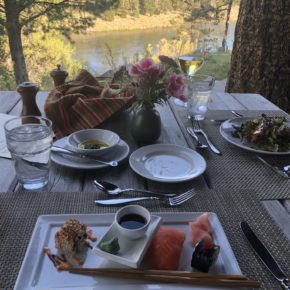
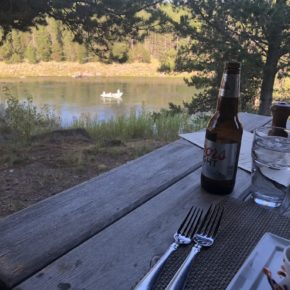


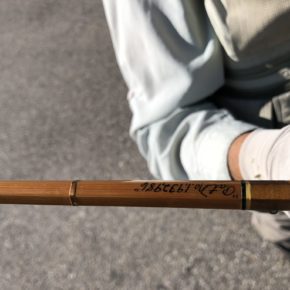

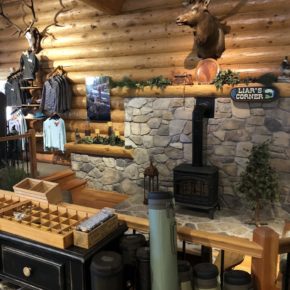

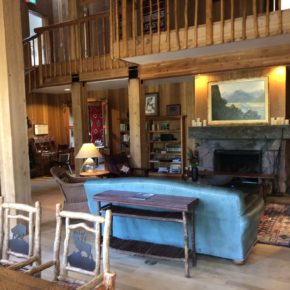
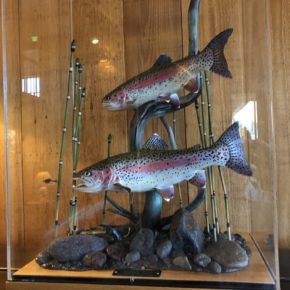
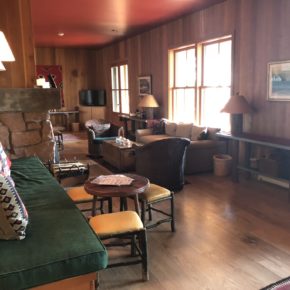
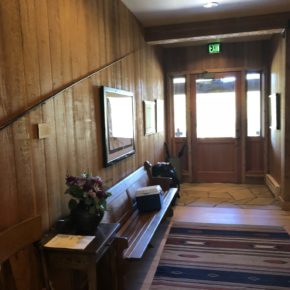
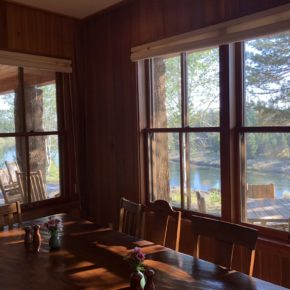
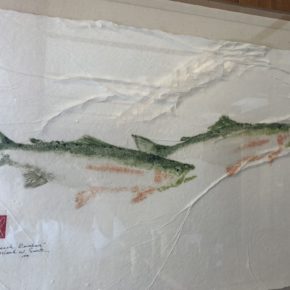
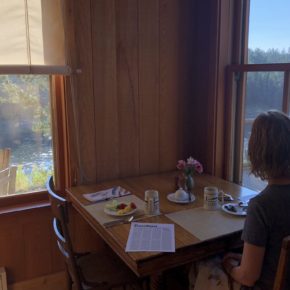
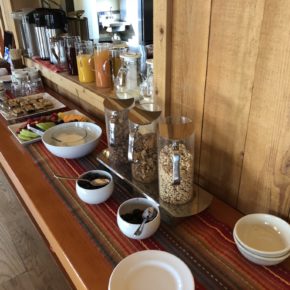
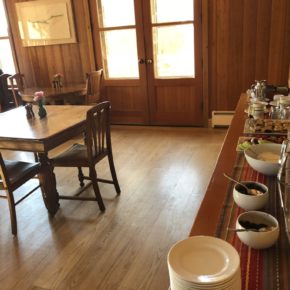
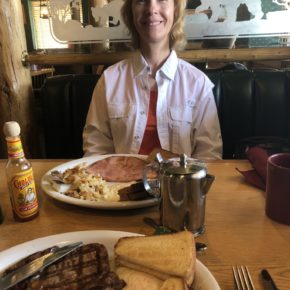
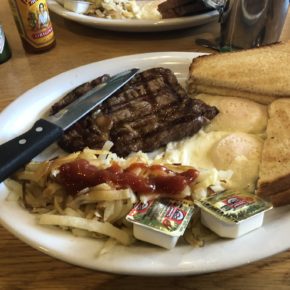


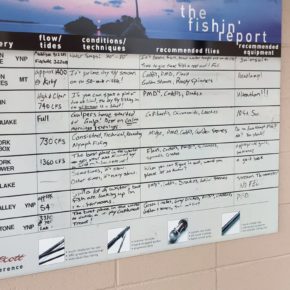
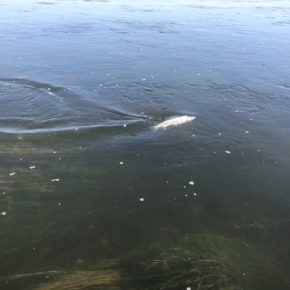
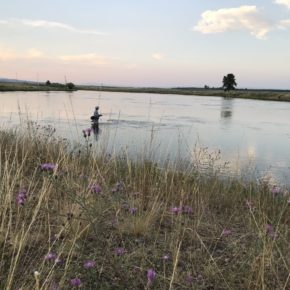
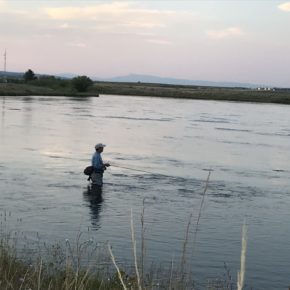

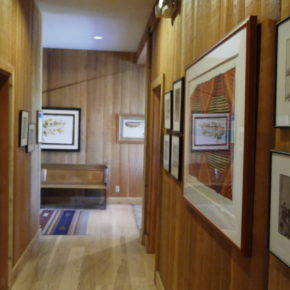
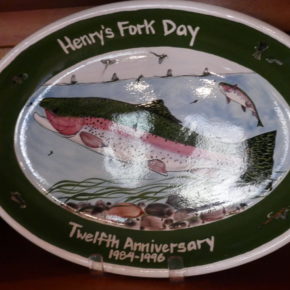
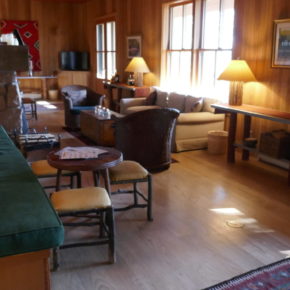
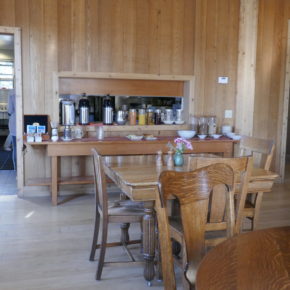
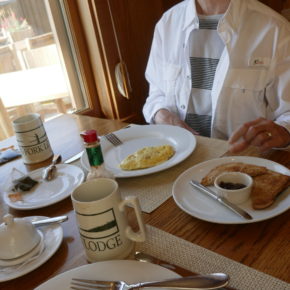
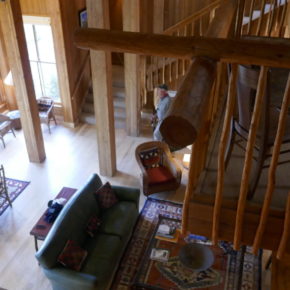


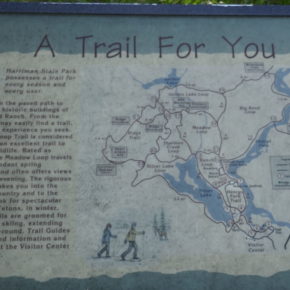




Great post Meng! This is only the second year in about the last 30 that I haven’t fished Montana & or Idaho. Heartbreaking. Just read the latest report from Blue Ribbon Flies and the gulpers are on. Watching you get the Henry’s Fork rainbow just about left a tear in my eye. Sweet! Thanks for sharing.